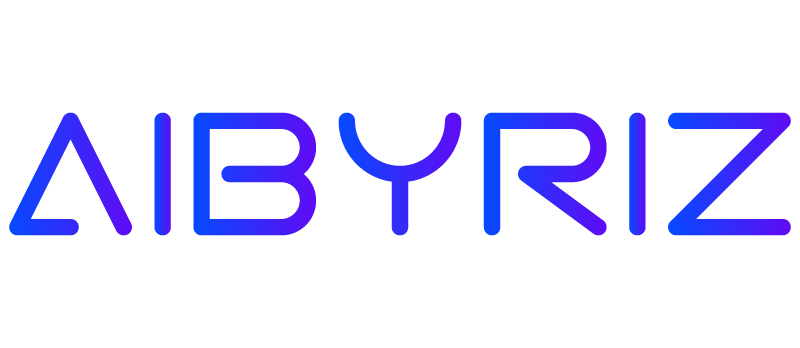Generative AI has created a fundamental change in leadership performance tracking and improvement methods. Leadership teams now exploit AI-powered technologies that analyse big data sets to spot patterns and make quicker decisions. Organisations can now move beyond traditional performance metrics to more complete and accurate ways of assessing leadership.
Leaders who adopt AI and decision-making tools learn about their strengths and growth areas more effectively. AI-driven analytics and business intelligence platforms help them monitor live performance indicators and receive customised recommendations to enhance their decision-making abilities. The blend of generative AI capabilities with analytical approaches opens new paths to leadership development and organisational excellence.
The Evolution of Data-Driven Leadership
Informed leadership has transformed remarkably in the last decade. Leadership has changed from simple performance metrics to sophisticated analytical approaches. This development reflects modern business environments’ just needs and leadership responsibilities’ growing complexity.
Traditional approaches to performance tracking
Corporate boardrooms used to evaluate leadership through a narrow lens of metrics that didn’t tell the whole story. The standard measurements included:
- Revenue achievement and cost management
- Employee turnover rates
- Customer satisfaction scores
- Annual performance reviews
These metrics gave valuable information but often missed crucial aspects of leadership impact and market dynamics 1.
Limitations of conventional analytics tools
Modern leadership needs face major constraints from traditional analytics tools. Research shows standard analytics methods cannot get complete insights from massive data volumes 2. These tools have scalability issues and often fail to process large datasets and complex queries effectively 3. Traditional Business Intelligence (BI) tools also show poor data integration capabilities that limit their power to deliver immediate insights for decision-making.
The emergence of generative AI as a game-changer
Generative AI has revolutionised how companies track leadership performance. Global leaders overwhelmingly agree, with 97% seeing it as transformative for their companies 4. This technology serves as a detailed solution that improves and speeds up how we extract insights from vast amounts of information 2. Leaders can now focus on strategic initiatives because generative AI increases human capabilities and automates 60% to 70% of daily activities 2.
Competitive businesses must now move toward new and integrated KPIs 1. Companies increasingly use informed organisational network analysis (ONA) to visualise information flow, decision-making patterns, and communication networks within their structure. Traditional metrics alone cannot capture the nuanced understanding of leadership effectiveness that this approach provides 1.
Key Benefits of Generative AI for Leadership Performance
Generative AI has ushered in a new era of leadership performance tracking that provides unprecedented capabilities to drive organisational growth and development. This revolutionary technology’s effect goes way beyond simple automation and creates opportunities to improve leadership capabilities.
Improved pattern recognition and trend forecasting
Generative AI processes so big amounts of data quickly and accurately. AI systems analyse more than 3 million data points each day 5. Organisations can spot subtle patterns and relationships between performance drivers that often remain hidden. This improved pattern recognition helps companies predict market trends and adjust their strategies proactively to achieve better business results 6.
Individual-specific insights and recommendations
Generative AI excels at knowing how to deliver highly individual-specific guidance. Leaders receive custom advice that lines up with their priorities through specific prompts and detailed criteria 7. These key advantages make a difference:
- AI-powered virtual assistants that understand user priorities as time passes
- Up-to-the-minute feedback systems that adapt to individual leadership styles
- Custom training modules that match personal development needs
Improved decision-making through scenario analysis
One of the most important advantages comes from AI’s power to improve decision-making processes. Organisations now utilise AI to perform driver-based scenario planning with unprecedented precision 8. Leaders can now:
- Find subtle patterns and relationships between performance drivers by processing massive data sets 8
- Generate forecasts at a scale humans cannot match 8
- Test plans effectively by modelling different versions of the future 8
This advanced scenario analysis approach delivers remarkable results. Studies show that generative AI could add between £2.04 trillion to £3.46 trillion annually through various use cases 7. Modern leaders now consider AI an essential tool for development and decision-making because it analyses complex datasets and provides practical insights effectively.
Implementing Generative AI in Leadership Workflows
Leaders need a balanced combination of state-of-the-art technology and practical applications to implement generative AI effectively in their daily operations. Business statistics show that 47% of organisations already leverage AI as digital assistants in their operations 9.
Integrating AI-powered virtual assistants
Business leaders now use AI-powered virtual assistants to make their daily operations efficient. These smart systems handle different tasks that include:
- Scheduling meetings and managing calendars
- Automating routine email communications
- Processing and organising documents
- Delivering up-to-the-minute data analysis
- Managing task prioritisation and deadlines
Using generative AI for performance review preparation
AI tools have changed performance reviews by a lot. These systems analyse coaching session transcripts to spot key themes and help leaders create customised preparation materials 10. Studies showed that managers usually spend 17 hours per employee to prepare performance reviews 11. The technology lets managers dedicate more time to meaningful interactions instead of administrative tasks.
Making use of AI for leadership development and coaching
AI-Powered Coaching revolutionises leadership development with smart platforms that deliver individual-specific feedback about communication styles and leadership impact. AI coaching platforms track key leadership traits that include:
- A leader’s eye contact and body language
- Speaking patterns and filler words
- Language that promotes inclusion
- Impact of presentations 12
The process needs robust data governance and security protocols. Companies should create clear data protection guidelines and set up proper access controls 9. This method yields results, as research shows AI coaching platforms help reach more people, create better client experiences, and produce superior coaching results 12.
Measuring the Impact of Generative AI on Leadership Effectiveness
Organisations need a systematic approach with both quantitative and qualitative metrics to measure how AI works in leadership environments. Companies that use AI-driven analytics are 5x more likely to see better line up between functions. These organisations also become 3x more agile and responsive compared to others who don’t implement AI analytics 13.
Defining relevant KPIs and success metrics
Clear Key Performance Indicators (KPIs) are essential to measure AI’s impact effectively. Organisations that use AI-informed KPIs have shown significant improvements in their leadership development programmes. These metrics work best:
- Better operational efficiency
- Higher customer satisfaction
- Increased employee participation
- Faster and more accurate decisions
- Better innovation and adaptation
Research indicates that companies using AI to collect feedback see a 30% increase in employee participation and satisfaction rates 14. This shows how AI-driven leadership initiatives create real results.
Conducting comparative studies and A/B testing
Data-driven experimentation is vital to prove AI’s effect on leadership performance. Organisations can use AI to prioritise test hypotheses based on expected results, which adds an objective perspective to the review process 15. Leaders can benefit from this approach by:
- Determining which leadership styles work best
- Measuring team performance in departments of all sizes
- Understanding how AI-powered decisions perform compared to conventional methods
Gathering feedback from leaders and team members
Stakeholder feedback collection and analysis are a great way to get insights about AI’s effectiveness in leadership contexts. Studies show that 95% of companies collect feedback, yet only 10% use these suggestions to improve their processes 16. AI-powered tools have changed how organisations handle feedback by:
- Making feedback collection easier through multiple channels
- Converting all interactions into searchable formats
- Spotting common patterns and themes
- Tracking customer and employee sentiments accurately
Leaders report 40% higher job satisfaction when their organisations use AI-powered feedback systems. They also feel more purposeful in their leadership roles 17. These results show that AI and decision-making systems create a more responsive and effective leadership environment.
Next Steps
Generative AI has transformed how organisations track leadership performance and creates opportunities to learn about smarter decision-making. Leaders today use sophisticated pattern recognition capabilities, tailored recommendations, and powerful scenario analysis tools that didn’t exist a few years ago. These advances help organisations look beyond traditional metrics. Up-to-the-minute data analysis and useful insights provide a full picture of performance.
AI-improved leadership tools have proven their vital role in modern business. Organisations see major improvements in streamlined processes, employee participation, and decision-making accuracy after implementing these solutions. Leadership teams with AI-powered analytics can face future challenges confidently. Informed decisions support both personal growth and organisational success. Leadership excellence thrives when teams embrace these powerful tools while retaining the human elements that make great leaders exceptional.
FAQs
How is generative AI utilised in managing performance?
Generative AI can be employed by employees to conduct self-evaluations as part of a broader performance management strategy. Before discussions with their manager, employees can input their performance notes into an AI tool, which then generates a comprehensive summary. This process can also include various prompts to uncover additional insights.
In what ways can AI enhance performance management systems?
AI-enhanced performance management systems allow for the efficient monitoring of employee performance across the entire company and within specific departments. As employees update their progress towards goals, the AI system tracks these performance metrics and provides alerts if it appears that the targets may not be met.
How does AI contribute to leadership development?
AI significantly enhances the personalisation of leadership development by analysing various data sources such as performance evaluations, feedback surveys, and behavioural assessments. This analysis helps pinpoint an individual’s development needs based on their strengths, weaknesses, opportunities, and threats (SWOT).
What is a primary characteristic of generative AI?
A key feature of generative AI is its ability to generate new and original content, including images, text, and other media forms, by learning from existing data patterns.
References
[1] – https://www.worklytics.co/blog/measure-leadership-performance-with-real-data
[2] – https://www.forbes.com/councils/forbestechcouncil/2024/08/01/generative-ai-and-big-data-analytics-transforming-decision-making-for-leaders/
[3] – https://www.linkedin.com/pulse/top-10-challenges-every-data-leader-faces-traditional
[4] – https://www.accenture.com/us-en/blogs/cloud/why-global-leaders-think-generative-ai-game-changer
[5] – https://heuritech.com/
[6] – https://graphite-note.com/the-power-of-ai-market-trend-forecasting/
[7] – https://www.forbes.com/sites/committeeof200/2023/11/29/transformative-leadership-leveraging-the-power-of-generative-ai/
[8] – https://paro.ai/blog/3-ways-ai-reinventing-scenario-planning/
[9] – https://clickup.com/blog/ai-tools-for-executive-assistants/
[10] – https://www.linkedin.com/pulse/unleashing-power-generative-ai-coaching-beginners-rutschmann
[11] – https://lattice.com/library/using-ai-to-write-performance-reviews-everything-you-need-to-know
[12] – https://www.linkedin.com/pulse/how-im-using-generative-ai-10x-my-executive-coaching-ryan-dickerson
[13] – https://cloud.google.com/transform/kpis-for-gen-ai-why-measuring-your-new-ai-is-essential-to-its-success
[14] – https://psicosmart.net/blogs/blog-integrating-360degree-feedback-with-ai-revolutionising-leadership-development-strategies-201060
[15] – https://www.kameleoon.com/ai-ab-testing
[16] – https://www.forbes.com/sites/tomasgorny/2024/08/12/how-to-bring-customer-feedback-to-life-with-ai/
[17] – https://psico-smart.com/en/blogs/blog-utilising-ai-and-machine-learning-in-leadership-potential-evaluation-172882














